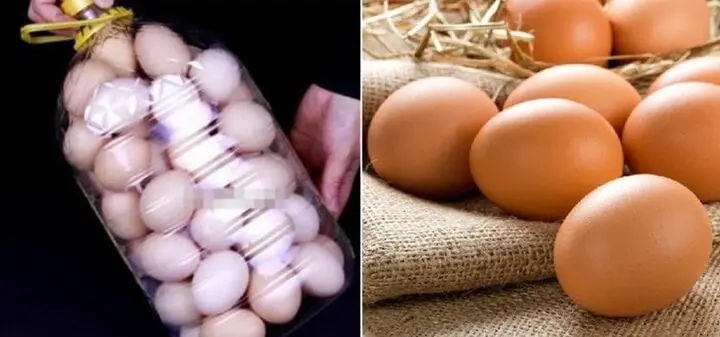To ensure that eggs remain intact during transportation, in addition to common methods such as using husks, paper, or polystyrene boxes, you can also try a packing trick using an empty cooking oil bottle. This method allows you to transport a large number of eggs while protecting them from breaking during long-distance travel.
Trick to Packing Eggs Using an Empty Cooking Oil Bottle
To safely and effectively utilize this method, follow these steps:
Step 1: Prepare and Clean the Oil Bottle
Get an empty 5-liter cooking oil bottle. This plastic bottle may have some oil residue inside, so it’s important to clean it thoroughly to avoid contaminating the eggs and causing slipperiness, which can lead to breakage during packing and transportation. Use warm water and a small amount of dish soap to clean both the inside and outside of the bottle. You can use a small brush or a long stick to scrub the inside corners of the bottle. After cleaning, let the bottle air dry completely before use.

Try this trick of packing eggs using an empty cooking oil bottle.
Step 2: Create a Hole for the Eggs
The outside of the oil bottle usually has a rectangular paper label. Use a knife or scissors to cut along the edge of this label to create a large enough hole to fit your hand inside the bottle. Note that you don’t need to cut the label completely in half; just cut enough to create a space for the eggs.
Here are the steps to cut the label: Mark a straight line along the edge of the label with a pencil or marker for accuracy; use a knife or scissors to cut along the marked line, being careful not to injure yourself. Once cut, gently bend and tear the label from the cut position, creating a hole for easy access to the inside.
Step 3: Place the Eggs in the Bottle
Once the oil bottle is clean and dry, you can start inserting the eggs from the cut position. It’s best to start placing the eggs from both ends of the bottle, creating layers of eggs inside. Be gentle and patient during this process to avoid breakage. This stacking method not only allows for more eggs to be transported but also secures them better, reducing the chances of breakage.
Carefully place each egg into the bottle from the bottom up, using your fingers to gently push them into position. If there are gaps between the eggs, you can use soft paper or tissue paper as a cushion to prevent them from knocking against each other.
Step 4: Seal the Bottle
After filling the bottle with eggs, seal the cut area with transparent tape. Apply multiple layers of tape to ensure it’s secure and airtight. This will protect the eggs from external factors and prevent them from falling out during transportation.
With the tape in place, the packing process is complete. Typically, a 5-liter empty cooking oil bottle can hold around 75 eggs. For added safety, hold the bottle upright and grasp the neck of the bottle. This way, transporting the eggs becomes convenient, whether in a car or while walking, without worrying about breakage due to impact.
Using an empty cooking oil bottle to pack eggs is a simple yet effective method to protect them from breaking during transportation. This approach not only saves space but also ensures the eggs are well-protected.
According to vtcnews.vn

































